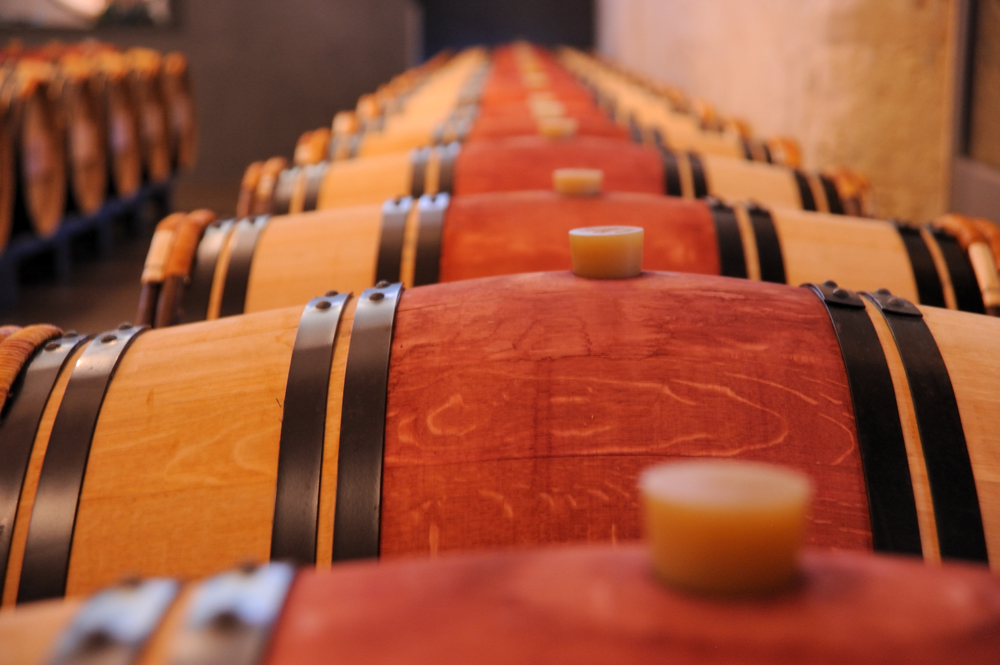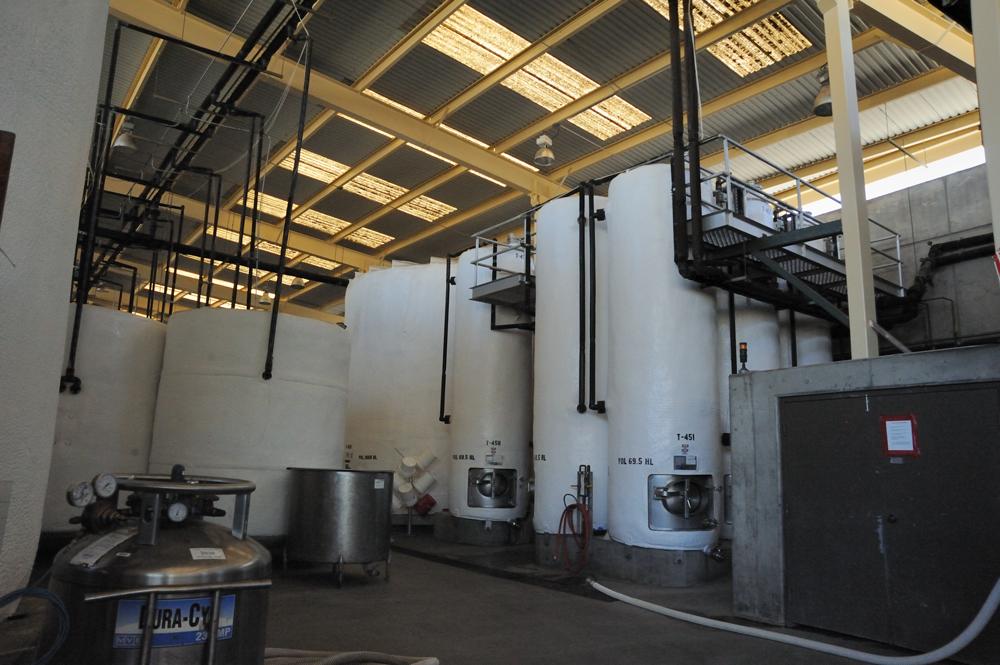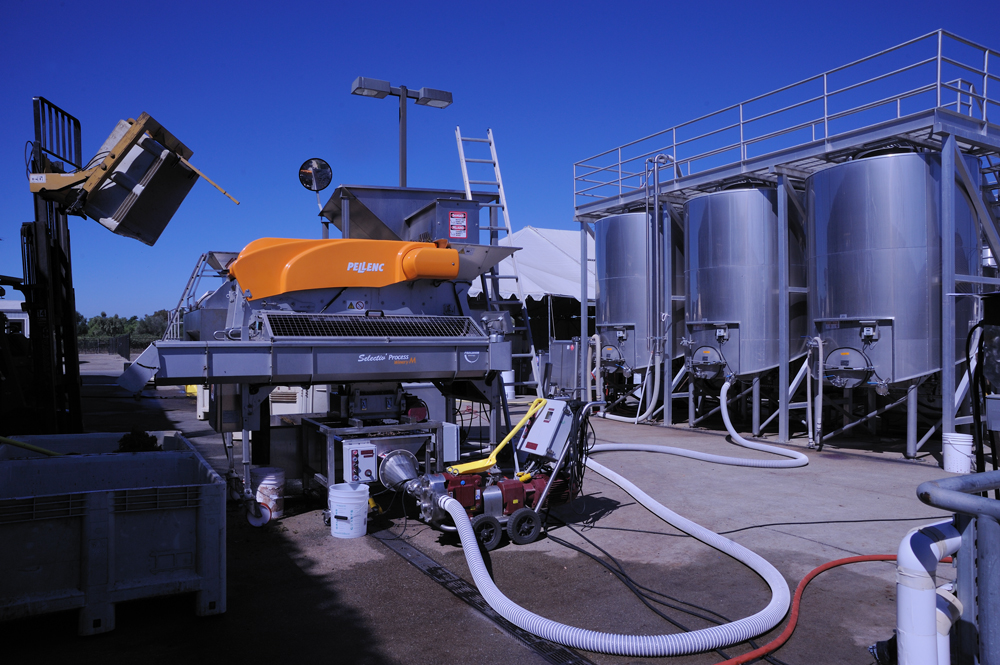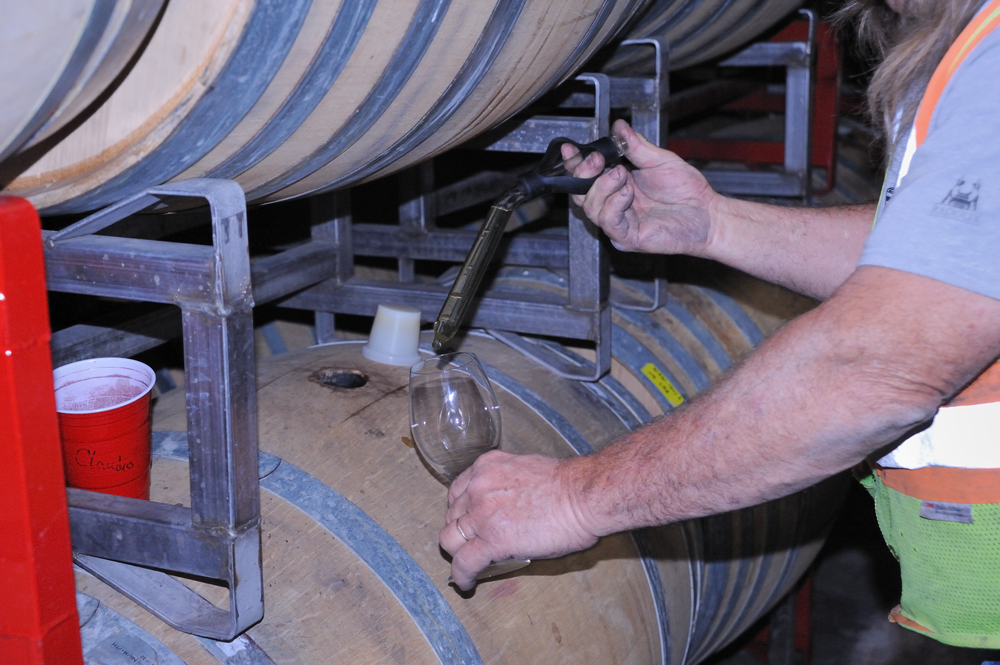
Maturing wine. Château Margaux, Bordeaux.
Occasionally, wine labels feature terms such as “oaked” (and sometimes even “non-oaked”), “18 (or 24, or 36) months in oak barrel,” and others that hint at the role of oak and oak barrels in the winemaking process. A substantial portion of the label information holds significance and is intended to influence wine selection, as it is purposefully included for this reason.
Therefore, let’s delve into barrels and oak, understanding their purposes, what they impart to wine, and how to consider the oak influence when choosing wine.
Oak is not the sole type of wood employed for barrel crafting, but due to its unique properties, it occupies the largest role in viniculture. Oak is pliant, making it suitable for barrel construction; it retains water while allowing air to pass through; it exhibits relative resistance to fungal and bacterial infections; and it imparts pleasant tastes to wine without introducing any unpleasant flavors.
The barrel, originally conceived by the Romans in the 3rd century, served as a robust alternative to the fragile and inconvenient for transportation amphoras. Despite the emergence of various new container types in modern times, none have supplanted the barrel in its entirety. Barrels have traditionally played crucial roles in wine fermentation, aging, and storage. While some innovative vessels have found applications in specific vinicultural processes, oak remains an indispensable and actively contributing element in winemaking.
An oak barrel imparts two primary elements to wine: oxygen and aromatic compounds extracted from wood.
Oxygen is an unavoidable participant in the vinification process. As an active gas present everywhere, it has the potential to oxidize everything. If wine were to undergo active oxidation during fermentation, it would lose its fresh, fruity aroma and many other taste components. Thus, winemakers actively combat the effects of oxygen during this stage. Grapes, before or immediately after harvest, are treated with sulfur dioxide, an active antioxidant. Sulfur dioxide is also periodically added during fermentation. Harvesting grapes at lower temperatures, preferably during the night in hot climates, and promptly cooling them down helps decrease the intensity of various biochemical processes, including oxidation.
However, complete elimination of oxygen and oxidation during fermentation would result in a wine with simple taste dominated by fruity aromas. Such a technology does exist, known as carbonic maceration, notably used in the production of Beaujolais Nouveau (more about this here). However, this approach is not suitable for all wines. Controlled oxidation introduces new and intriguing notes to wine. Consequently, winemakers need to strike a balance, providing the wine with an amount of oxygen that enhances its taste without compromising its quality. The precise balance varies for each type of wine, but the regulation of this process has limited association with oak barrels.
The role of a barrel in the aeration of finished wine during maturation is indeed significant. There are two primary approaches to wine maturation, considering oxidation, before bottling: one without oxygen entirely and the other with limited access to oxygen.
In the first case, wine is stored in large, completely filled vats made of stainless steel or cement, covered inside with glass or epoxy. This approach is suitable for white light wines with a bright fruity aroma, as seen in the example of New Zealand Sauvignon Blanc. However, for red and full-bodied white wines, limited oxidation during their maturation period enhances aroma, smoothens tannins, and introduces new tastes. Almost all non-fruity and non-floral aromas, known as earth notes, result from limited oxidation. Of course, such oxidation should be judiciously limited to avoid a dramatic negative impact on wine taste. Small oak barrels are employed for this purpose, with the traditional Bordeaux barrel (225 liters) used for red wine and the Burgundy barrel (228 liters) for white wine. Slow oxidation in barrels over one to three years imparts new complex aromas to the wine, softens tannins, and stabilizes, or sometimes deepens, the color. In some cases, when a winemaker seeks to avoid influences other than oxidation from oak, oxidative maturation is achieved through controlled oxygen bubbling in stainless steel vats. I observed this approach at Domain Chandon in the case of the base wine for sparkling wine, where even minimal tannin presence is unwelcome.
Vats for base wine fermentation with control of temperature and oxygen level. Domain Chandon, California.

Wine can undergo intentional and strong oxidation by being stored in only partially filled barrels. This approach is particularly employed for fortified wines such as Jerez, Porto, and Australian Rutherglen Muscat. The result is a wine with a robust aroma of caramel, toffee, coffee, and nuts. However, this process leads to an entirely different narrative. For detailed information about Jerez, you can read more here.
In addition to oxygen, oak imparts a distinct taste to wine. Primarily, it provides tannins, contributing to the astringency of the wine. While grapes naturally contain their own tannins, these are primarily found in the skin. As a result, red wines, which undergo fermentation in the presence of the skin, are more enriched with tannins. White wines, on the other hand, typically have minimal tannins. They are fermented after being separated from the skin, with only a few varieties such as Albarino or Muscat spending a short time with the skins, resulting in trace amounts of tannins. Oak introduces its own tannins, either complementing the grape’s tannins in red wines or providing them in white wines. Additionally, oak imparts aromatic notes of vanilla, toast, and smoke to the wine.
The choice of barrel type and the duration of time spent in the barrel are crucial factors in determining the level of oxidation and the desired taste profile of the wine. Each barrel is unique, and these considerations play a pivotal role in winemaking.
There are two primary types of oak used in barrel making: European oak and American oak. European oak, although technically a combination of two different species, is treated as one in winemaking due to its similar characteristics However, European oak is considerably more expensive than American oak; a new 225-liter European oak barrel costs around 1000 US dollars. The wood of European oak has larger pores and is less pliable, requiring the staves for the barrel to be split, resulting in more waste and a lower yield. On the other hand, American oak can be sawed, increasing the yield. Despite the cost difference, European oak is preferred for wine maturation due to its larger pores. The tannins in European oak are also softer, imparting a light aroma of vanilla and toast to the wine. In contrast, American oak has more assertive tannins, contributing stronger aromas of vanilla and coconut to the wine.
This information about the type of oak can often be found on the winemaker’s website or, in some cases, on the label, providing consumers with an indication of the expected taste profile of the wine.
Furthermore, the preparation of the barrel involves burning the interior. While the slats need to be heated for bending, the degree of burning depends on the desired properties. Intensely burned wood imparts more tannins and aromas to the wine.
Additionally, the age of the barrel plays a significant role. A new barrel imparts a substantial influence on the wine, offering a plethora of characteristics. However, after just one year of use, the barrel imparts significantly less. After four years, the barrel may cease to contribute to the wine’s flavor profile but remains ideal for oxidative maturation.
The type of oak, the degree of burning, and the age of the barrel constitute the three key parameters that a winemaker carefully considers when selecting the barrel for their objectives. Each grape variety, blend, terroir, and suggested maturation time, regardless of the winemaker’s vision, demands a uniquely chosen barrel or a set of several barrels. The selection of the barrel is, in itself, a distinct art form in winemaking.
Size is a crucial factor, especially in the case of wine barrels. Only small barrels, such as traditional Bordeaux 225-liter barrels, can impart distinctive qualities to the wine. Large barrels, with capacities of 1000 liters and beyond, lack the ability to provide sufficient oxygen or extract enough substances to make a notable impact in such volumes. While larger barrels are occasionally employed for fermentation, many producers opt for the convenience of stainless steel vats as a replacement. It’s worth noting that all the barrels mentioned below are of the small variety.
Barrels serve dual purposes in winemaking—fermentation and ageing.
Presently, fermentation is predominantly conducted in inert vats; however, exceptions exist. In general, fermenting red wine in oak barrels is considered impractical due to the abundance of skins, hindering complete contact between the wine and wood. Nevertheless, there are instances where winemakers opt to transfer the must before fermentation completion and continue the process in oak barrels, facilitating active absorption of oak components by the wine.
Stainless steel vats. Wente Vineyard, California.

Oak barrel fermentation makes more sense for white wines. During fermentation, wine absorbs more from oak than during maturation. While oak is almost a necessary component for red wines, for many white wines, contact with oak is less beneficial than for reds. Light, delicate wines with vibrant aromas like Sauvignon Blanc or Gewürztraminer may lose their distinctive character when exposed to oak. However, for some whites, such as Chardonnay, contact with oak can introduce interesting nuances. Consequently, Chardonnay is often fermented in oak barrels. Choosing the right barrel is crucial because, unlike red wines, white wines, including Chardonnay, are less tolerant of an excess of tannins. The risk is transforming the wine into an “oak wine” rather than preserving the Chardonnay character, a situation that has sometimes occurred with inexpensive Californian Chardonnay.
Maturing red wine in oak barrels adds significant complexity and interest. Tannins, responsible for astringency, become softer, acidity decreases, color stabilizes, and new aromas develop. The maturation process typically spans at least 12 months, often more, for high-quality red wines. Those that skip barrel maturation tend to retain a simple, strong, fruity aroma. Wines with elevated tannin levels, such as Cabernet, may be excessively astringent without the softening effects of barrel aging.
Obtaining information on the duration of barrel maturation is not always available, as some winemakers choose not to disclose this information.
Spain is pleasant exception. In Spain, the duration of barrel maturation is legally stipulated, providing consumers with clear information on wine labels:
•Joven: Without barrel maturation; intended for immediate consumption.
•Crianza: Red wines must mature for at least 24 months, with a minimum of 6 months in oak barrels.
•Reserva: Red wines should mature for a minimum of 36 months, including at least 12 months in oak barrels. For white and rose wines, the duration is 18 and 6 months, respectively.
•Grand Reserva: Red wines require a minimum maturation period of 60 months, with at least 18 months spent in oak barrels. For white and rose wines, the durations are 48 and 6 months, respectively.
For white wines, the situation is more intricate. Light aromatic wines like Sauvignon Blanc are generally best consumed young, as aging rarely enhances their characteristics. These wines are usually bottled a few months after the completion of fermentation. On the other hand, medium- and full-bodied whites such as Chardonnay, Semillon, and Riesling may benefit from aging, and high-quality wines from these varieties are often matured in oak barrels. However, the careful selection of the barrel is crucial. In recent decades, the New World, particularly the USA, had a tendency to excessively oak Chardonnay, leading to an over-oaked trend. Consequently, un-oaked Chardonnay is now considered a significant accomplishment and is frequently highlighted on labels.
Certainly, some winemakers opt for cost-cutting measures at the expense of quality. In an attempt to impart oak aromas to inexpensive wines, winemakers often eschew barrels in favor of oak chips and staves, incorporating them into stainless steel tanks. However, this approach cannot replicate the maturation process provided by barrels and instead imparts intense tannins and oak aromas to the wine. The result is often wines that are excessively astringent and harsh. This is particularly undesirable in the case of Chardonnay. It’s worth noting that if the label of a New World wine, especially a budget-friendly one, features the word “oak” but not “barrel,” there’s a high likelihood that oak chips and staves were used. It is advisable to steer clear of such wines, especially if they are white.
Perhaps you’ve noticed that some barrels in the first photo have a red band in the middle. You might be wondering, “What is it, and why is it needed?” Even if you haven’t, I’ll tell you anyway.
During the maturation process, wine needs to be tasted periodically to monitor the progress. For this, wine is extracted from the barrel using a large pipette, and sometimes it drips onto the barrel itself. To prevent the appearance of unsightly stains, the potential drip area is pre-emptively painted in red.
Tasting of maturing wine on Wente Vineyard, California.

White Chardonnay matures in this barrel, so the barrel doesn’t painted.

Cellar with maturing wine. Wente Vineyard, California
